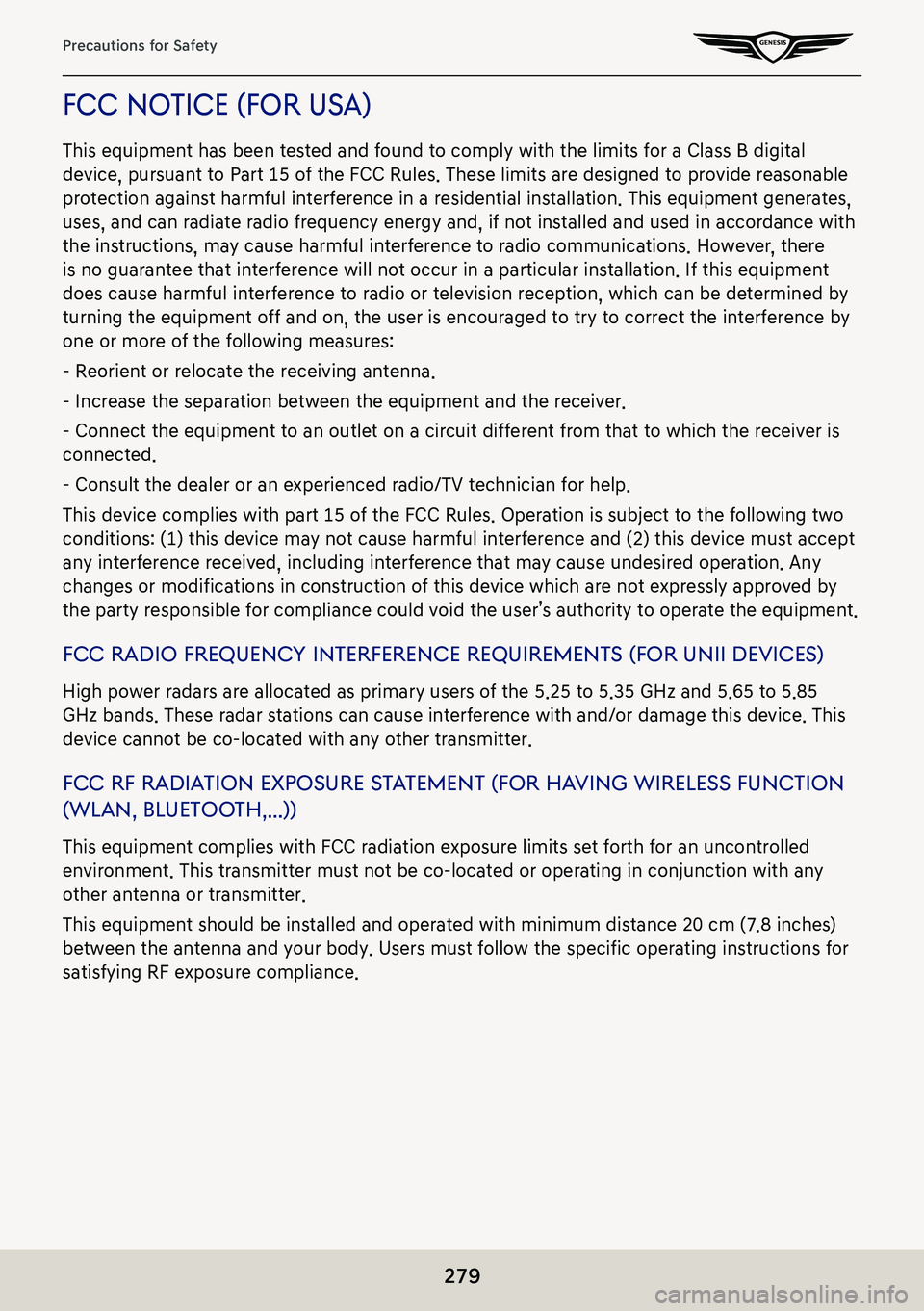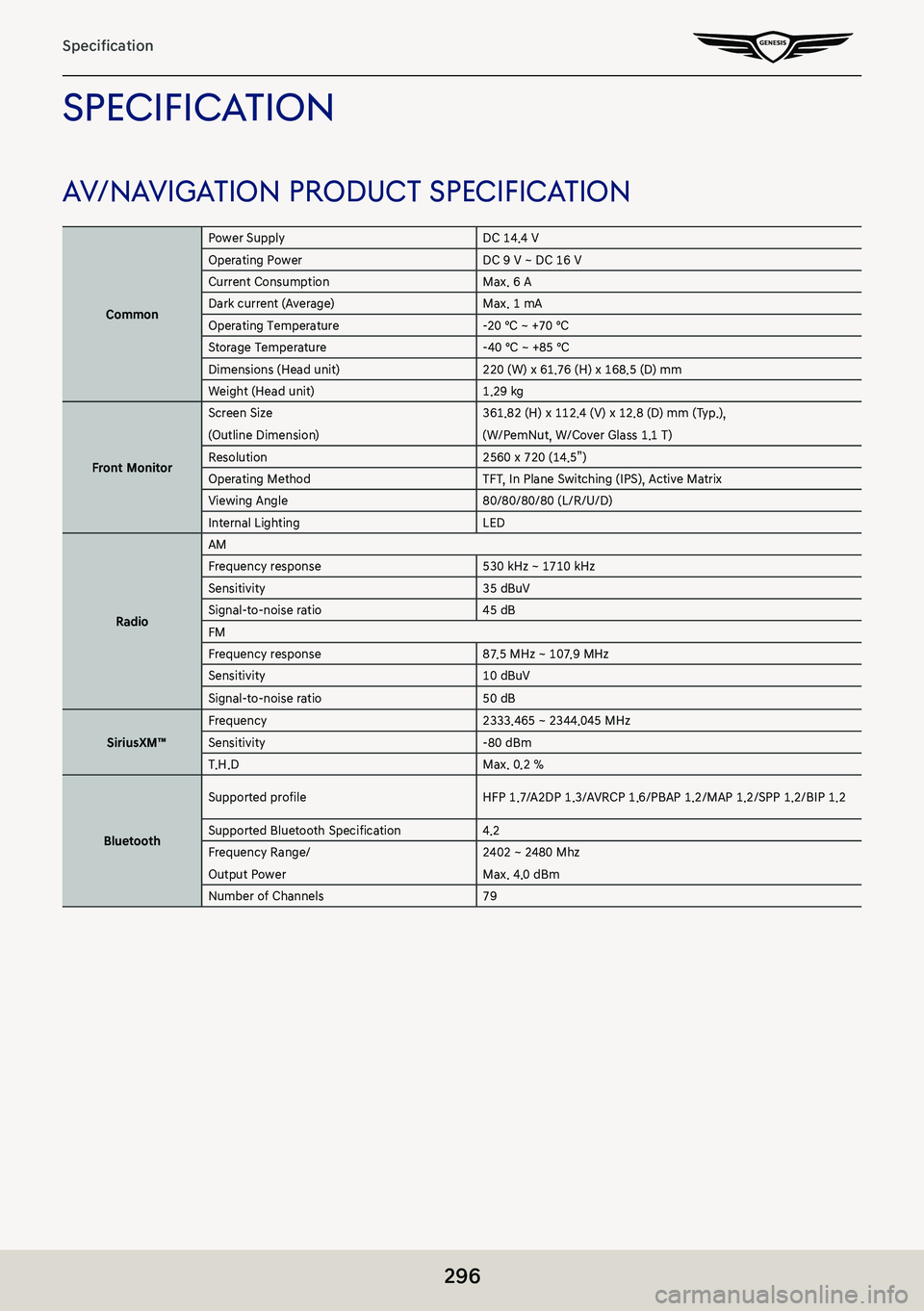Page 277 of 298

277
Precautions for Safety
WARNING:
䠐Don’t use a cellular phone when you are driving. You must stop at a safe place to use a
cellular phone.
䠐The use of the navigation radio by no means relieves the driver of his/her responsibilities.
The highway code must always be observed. Always observe the current traffic situation.
䠐The applicable traffic regulations and the prevailing traffic situation always take precedence
over the instructions issued by the navigation system if they contradict one another.
䠐For traffic safety reasons, use the navigation system menus only before starting a journey or
when the vehicle is stationary.
䠐In certain areas, one-way streets and turn off and entry prohibitions (e.g. pedestrian zones)
are not recorded. In areas such as these the navigation system will issue a warning. Pay
particular attention to one-way streets and turn off and entry restrictions.
䠐The navigation system does not take the relative safety of the suggested routes into
consideration. Road blocks, building sites, height or weight restrictions, traffic or weather
conditions or other influences which affect the route safety or travel time are not taken into
consideration for the suggested routes. Use your own discretion in order to decide on the
suitability of the suggested routes.
䠐The current legal road traffic speed limit always takes priority over the values saved on
the data. It is impossible to provide an assurance that the speed values of the navigation
system will always match those of the current traffic regulations in every situation.
䠐Always observe the applicable legal speed limits the traffic regulations. The vehicle
speedometer must always be given priority for display of the vehicle speed.
䠐Do not rely exclusively on the navigation system when attempting to locate an emergency
service (hospital, fire service etc.). It cannot be guaranteed that all available emergency
services in your vicinity are saved in the database. Use your own discretion and abilities to
secure help in such situations.
Page 279 of 298

279
Precautions for Safety
fcc noTice (for usa)
This equipment has been tested and found to comply with the limits for a Class B digital
device, pursuant to Part 15 of the FCC Rules. These limits are designed to provide reasonable
protection against harmful interference in a residential installation. This equipment generates,
uses, and can radiate radio frequency energy and, if not installed and used in accordance with
the instructions, may cause harmful interference to radio communications. However, there
is no guarantee that interference will not occur in a particular installation. If this equipment
does cause harmful interference to radio or television reception, which can be determined by
turning the equipment off and on, the user is encouraged to try to correct the interference by
one or more of the following measures:
- Reorient or relocate the receiving antenna.
- Increase the separation between the equipment and the receiver.
- Connect the equipment to an outlet on a circuit different from that to which the receiver is
connected.
- Consult the dealer or an experienced radio/TV technician for help.
This device complies with part 15 of the FCC Rules. Operation is subject to the following two
conditions: (1) this device may not cause harmful interference and (2) this device must accept
any interference received, including interference that may cause undesired operation. Any
changes or modifications in construction of this device which are not expressly approved by
the party responsible for compliance could void the user’s authority to operate the equipment.
fcc radio frequenc Y inTerference requiremenT s (for unii deVices)
High power radars are allocated as primary users of the 5.25 to 5.35 GHz and 5.65 to 5.85
GHz bands. These radar stations can cause interference with and/or damage this device. This
device cannot be co-located with any other transmitter.
fcc rf radiaTion exposure sT aTemenT (f or haVing wireless func Tion
(wlan, blueTooTh, . . .))
This equipment complies with FCC radiation exposure limits set forth for an uncontrolled
environment. This transmitter must not be co-located or operating in conjunction with any
other antenna or transmitter.
This equipment should be installed and operated with minimum distance 20 cm (7.8 inches)
between the antenna and your body. Users must follow the specific operating instructions for
satisfying RF exposure compliance.
Page 288 of 298
288
trademarks and licenses
siriusxm™
© 2020 Sirius XM Radio Inc. SiriusXM, Automatic, Pandora and all related logos are trademarks
of Sirius XM Radio Inc. and its respective subsidiaries. All rights reserved.
hd radio™ Technolog Y
HD Radio Technology manufactured under license from iBiquity Digital Corporation. U.S. and
Foreign Patents. For patents see http://dts.com/patents. HD Radio, Artist Experience, and the
HD, HD Radio, and "ARC" logos are registered trademarks or trademarks of iBiquity Digital
Corporation in the United States and/or other countries.
Page 296 of 298

296
Specification
SpeCifiC ation
av/navigation produC t SpeCifiC ation
Common
Power SupplyDC 14.4 VOperating PowerDC 9 V ~ DC 16 VCurrent ConsumptionMax. 6 ADark current (Average)Max. 1 mAOperating Temperature-20 ℃ ~ +70 ℃Storage Temperature-40 ℃ ~ +85 ℃Dimensions (Head unit)220 (W) x 61.76 (H) x 168.5 (D) mmWeight (Head unit)1.29 kg
Front Monitor
Screen Size
(Outline Dimension)
361.82 (H) x 112.4 (V) x 12.8 (D) mm (Typ.),
(W/PemNut, W/Cover Glass 1.1 T)Resolution2560 x 720 (14.5”)Operating MethodTFT, In Plane Switching (IPS), Active MatrixViewing Angle80/80/80/80 (L/R/U/D)Internal LightingLED
Radio
AMFrequency response530 kHz ~ 1710 kHzSensitivity35 dBuV Signal-to-noise ratio45 dBFMFrequency response87.5 MHz ~ 107.9 MHzSensitivity10 dBuV
Signal-to-noise ratio50 dB
SiriusXM™Frequency2333.465 ~ 2344.045 MHzSensitivity-80 dBmT.H.DMax. 0.2 %
Bluetooth
Supported profileHFP 1.7/A2DP 1.3/AVRCP 1.6/PBAP 1.2/MAP 1.2/SPP 1.2/BIP 1.2
Supported Bluetooth Specification4.2Frequency Range/
Output Power
2402 ~ 2480 Mhz
Max. 4.0 dBmNumber of Channels79